#Art Museum in Delhi
Text
Best Museum in Delhi
As contenders for the title of the best museum in Delhi, KNMA's exhibits are a testament to the city's cultural diversity. Each piece, thoughtfully selected, reflects the kaleidoscope of influences that have shaped Delhi's artistic landscape. It is a cultural oasis where visitors can escape the bustling city streets and embark on a journey through the soul of Delhi's artistry.
0 notes
Text
Most Interesting Places in Delhi

Kiran Nadar Museum of Art is a great place for all family members as it offers a serene environment to explore the best of work by the artists. It is one of the most Interesting Places in Delhi as at this museum you will experience an art exhibition featuring the best of Indian contemporary art. Kiran Nadar Museum of Art is the best art museum in Delhi to visit as entry is free and it is right in the middle of mall action too. Visitors to Saket malls can simply walk into this museum while shopping or after having an interesting meal at the food courts.
0 notes
Text


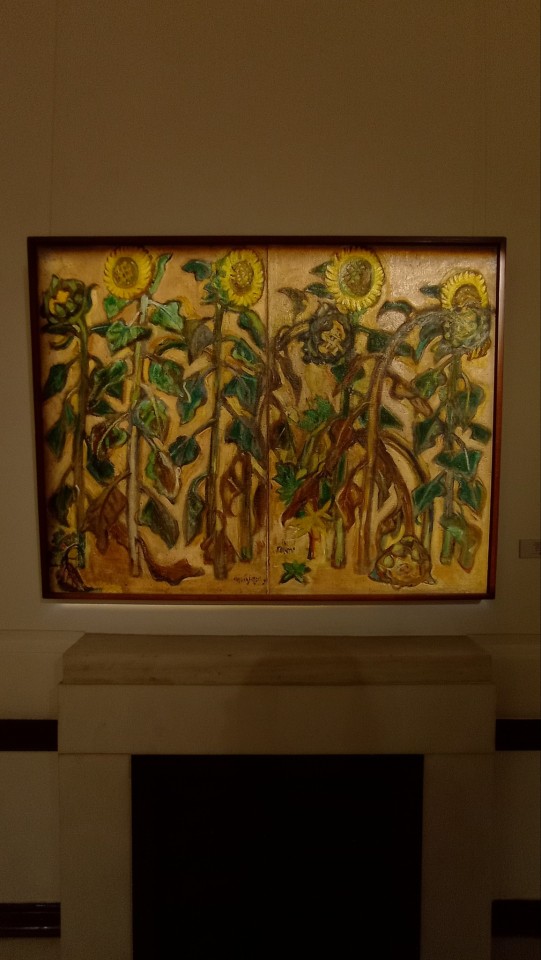

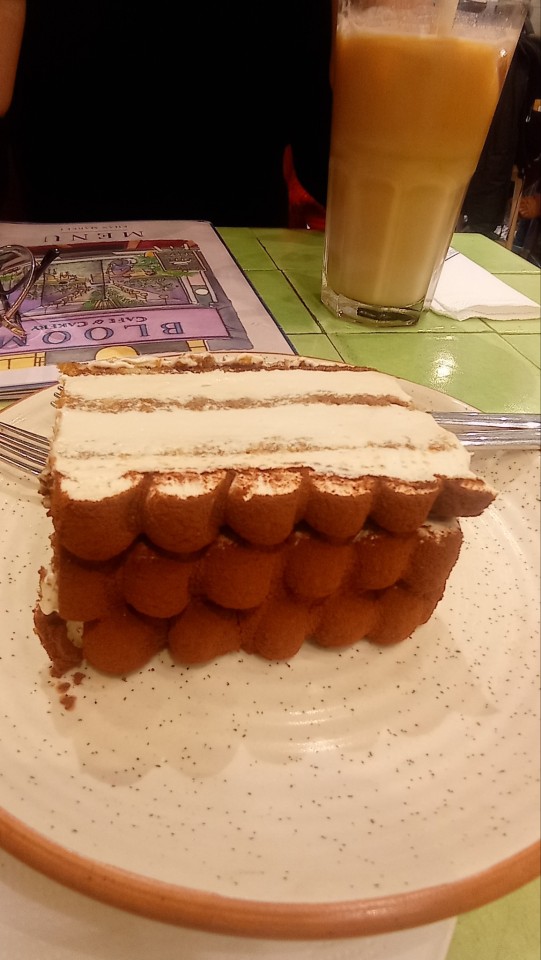
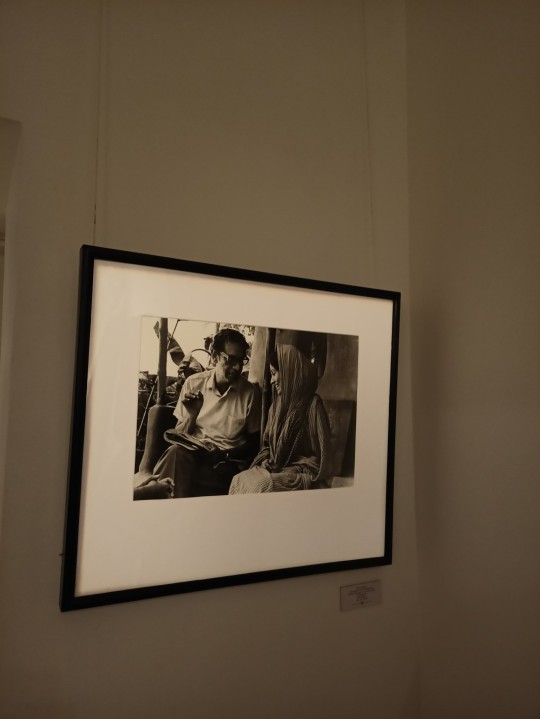


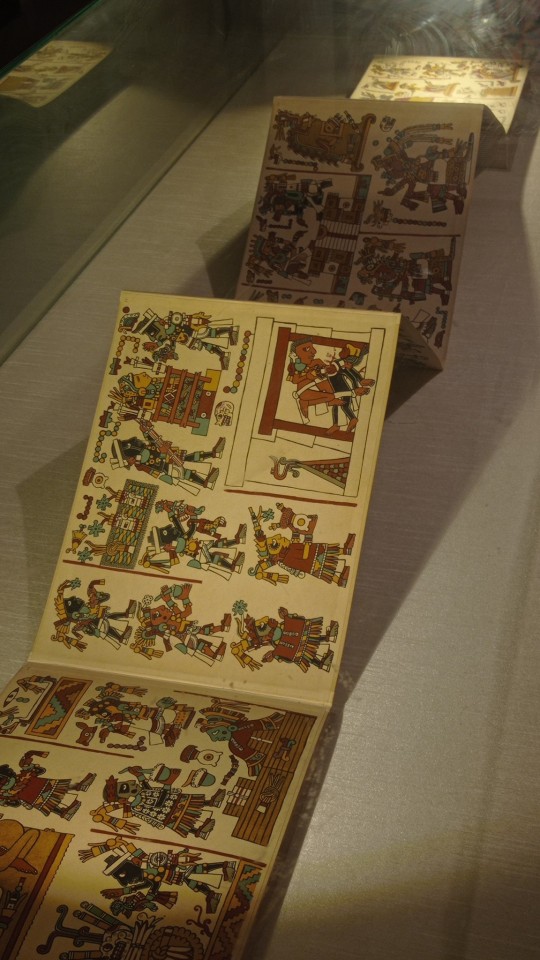
from my gallery (30/12/2023) - museum & cafe date with best friend <3
#national gallery of modern art#new delhi#museums#indian museums#dark academia#dark academia aesthetic#aesthetic#classic academia#classic academia aesthetic#light academia#light acadamia aesthetic#academia#moodboard#nostalgia#desi#being desi#tiramisu#coffee#cappuccino#visual art#graphic art#art history#artwork#art#art museum#chaotic academia#history#gallery#art gallery#mine
96 notes
·
View notes
Text
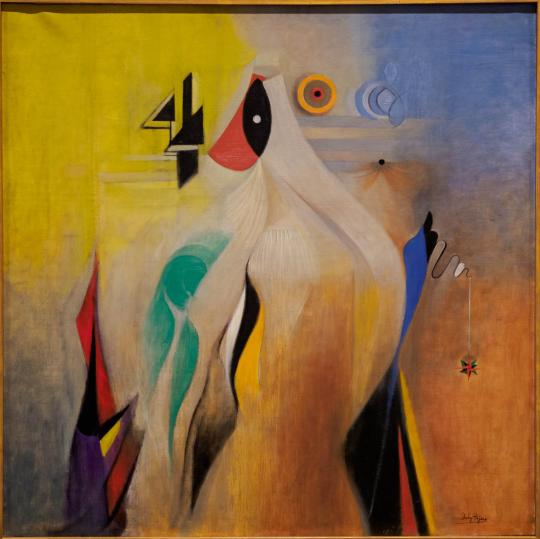
Delhy Tejero - "Composición abstracta (Abstract Composition)" (1954)
#Composición abstracta (Abstract Composition)#art#paintings#museum#art pieces#tumblr art#Delhy Tejero - (1954)
15 notes
·
View notes
Text






दोस्त के ईफ़ा-ए-व'अदा का है अब तक इंतिज़ार
गुज़रा अक्टूबर नवम्बर भी सितंबर की तरह
- शौक़ बहराइची
#desi dark academia#desi tumblr#desiblr#indian academia#desi academia#desi tag#delhi#november#museum#books and libraries#art gallery
12 notes
·
View notes
Text
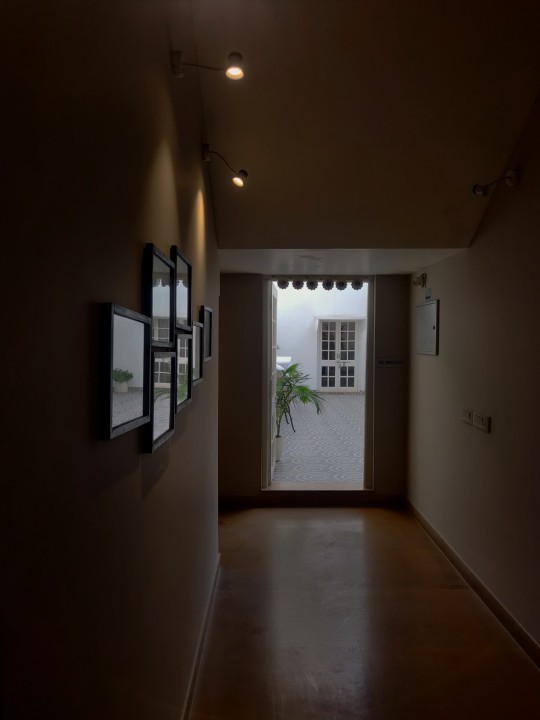
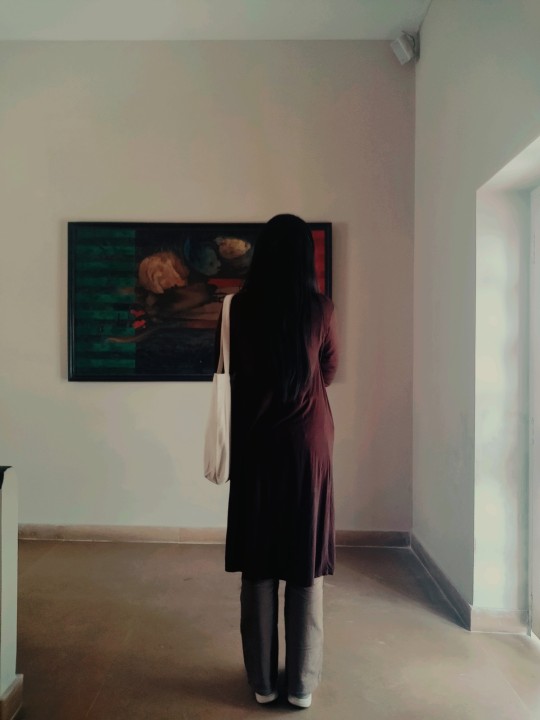
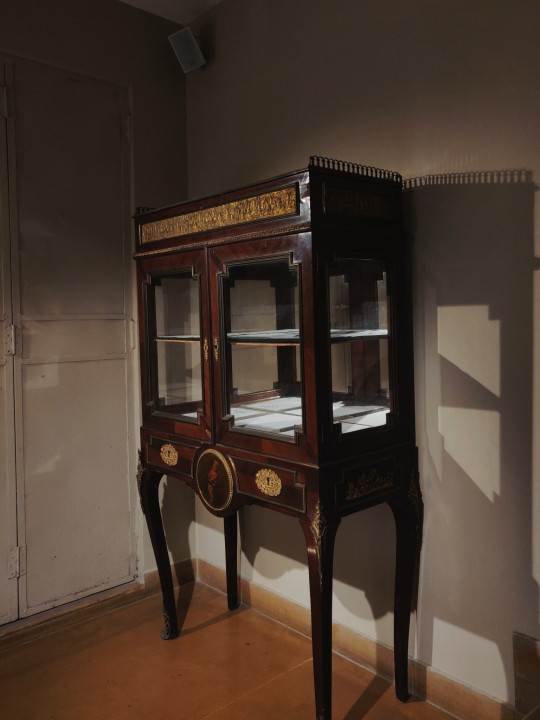
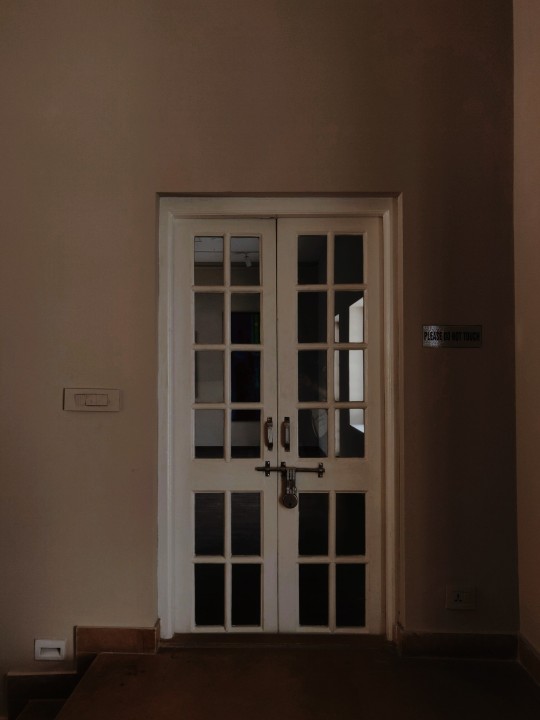
She felt very young; at the same time unspeakably aged. She sliced like a knife through everything; at the same time was outside, looking on. She had a perpetual sense, as she watched the taxi cabs, of being out, out, far out to sea and alone; she always had the feeling that it was very, very dangerous to live even one day. Not that she thought herself clever, or much out of the ordinary.
Virginia Woolf, 'Mrs Dalloway'
#aesthetic#dark academia#literature#delhi#indian#art#solitude#virginia woolf#mrs dalloway#quote#read#poetry#museum#room
38 notes
·
View notes
Text
oh, how i long to visit the van gogh exhibition in delhi! the thought of immersing myself in the world of one of the greatest artists of all time, surrounded by his masterpieces, is just too exciting to resist. but, i am a people pleaser, and i know that none of my friends would be interested in going with me. they'd rather spend their time doing more important things, like binge-watching netflix or scrolling through social media.
#delhi#van gogh#painting#museum#exhibition#art#history#love#culture#desi academia#desi tumblr#dark academia#brown girls
10 notes
·
View notes
Text
Kiran Nadar Museum of Art in Delhi: A Cultural Haven in the Capital
Delhi, the capital city of India, is a melting pot of cultures, history, and modernity. Among the numerous attractions that the city boasts, the Kiran Nadar Museum of Art in Delhi stands out as a beacon of contemporary art and culture. Established in 2010 by the philanthropist and art collector Kiran Nadar, this museum has become a vital part of the vibrant art scene in the capital. It is one of the many Museums in Delhi that attract art lovers, students, and tourists from around the world, offering a deep dive into the world of Indian contemporary and modern art.

Introduction to the Kiran Nadar Museum of Art in Delhi
The Kiran Nadar Museum of Art (KNMA) is India's first private museum dedicated to modern and contemporary art. It was founded with the vision of making art accessible to the public and fostering a deeper appreciation for the rich cultural heritage of India. Situated in the bustling areas of Saket and Noida, the museum has two locations that host a variety of exhibitions, workshops, and educational programs.
1. Vision and Mission
The mission of KNMA is to collect, preserve, and exhibit artworks that reflect the cultural and historical diversity of India. The museum aims to bridge the gap between traditional art forms and contemporary expressions, creating a dialogue between the past and the present. Through its extensive collection and dynamic programming, KNMA seeks to engage, educate, and inspire a wide audience.
2. The Collection
The collection at the Kiran Nadar Museum of Art in Delhi is both extensive and diverse. It includes works by some of the most renowned Indian artists such as Raja Ravi Varma, Amrita Sher-Gil, F.N. Souza, M.F. Husain, S.H. Raza, and Anish Kapoor, among others. The museum also features contemporary artists who are making waves in the global art scene. The collection spans various mediums, including painting, sculpture, photography, installation, and new media.
Exhibitions and Programs
1. Permanent Exhibitions
KNMA houses several permanent exhibitions that showcase the evolution of Indian art from the modern period to contemporary times. These exhibitions provide visitors with an overview of the significant movements and milestones in Indian art history. The carefully curated displays offer insights into the artistic processes and the socio-political contexts that influenced these works.
2. Temporary Exhibitions
In addition to its permanent collection, KNMA hosts a range of temporary exhibitions throughout the year. These exhibitions feature both emerging and established artists, highlighting new trends and experimental practices in the art world. The museum collaborates with international institutions to bring global art to Delhi, fostering cross-cultural exchanges and enriching the local art scene.
3. Educational Programs
The Kiran Nadar Museum of Art in Delhi is committed to education and outreach. The museum organizes a variety of educational programs aimed at different age groups and interests. These include guided tours, art workshops, lectures, and interactive sessions with artists. Schools and colleges frequently collaborate with the museum to enhance their art curricula and provide students with hands-on learning experiences.
4. Workshops and Events
KNMA regularly conducts workshops and events that encourage creative expression and artistic development. These activities cater to both beginners and seasoned artists, offering opportunities to learn new techniques and engage with contemporary art practices. The museum's events calendar is filled with artist talks, panel discussions, film screenings, and performances, making it a vibrant hub for cultural activities in Delhi.

Importance of KNMA in the Art Scene
1. Promoting Contemporary Art
One of the primary objectives of KNMA is to promote contemporary art and provide a platform for emerging artists. The museum's support for new and experimental works helps in nurturing talent and pushing the boundaries of artistic expression. By showcasing contemporary art alongside modern masterpieces, KNMA plays a crucial role in shaping the future of Indian art.
2. Accessibility and Inclusivity
KNMA strives to make art accessible to a broader audience. Unlike many traditional art institutions, the museum has free admission, ensuring that everyone, regardless of their socio-economic background, can experience and enjoy art. The museum's inclusive approach extends to its programming, which is designed to engage diverse communities and encourage public participation.
3. Cultural Dialogue
The Kiran Nadar Museum of Art in Delhi is not just a repository of art; it is a space for cultural dialogue. The museum's exhibitions and programs often address relevant social and political issues, prompting visitors to reflect on the world around them. By fostering conversations around art and its role in society, KNMA contributes to a deeper understanding and appreciation of cultural diversity.
Museums in Delhi: A Broader Perspective
1. Rich Cultural Heritage
Delhi is home to a plethora of museums that reflect its rich cultural heritage. From the National Museum, which houses ancient artifacts, to the Crafts Museum, which celebrates traditional crafts, the city offers a wide range of cultural experiences. The Kiran Nadar Museum of Art complements these institutions by focusing on modern and contemporary art, filling an important niche in the city's museum landscape.
2. Tourist Attraction
Museums in Delhi are major tourist attractions, drawing visitors from across the globe. They offer a window into India's history, culture, and artistic achievements. The Kiran Nadar Museum of Art, with its impressive collection and dynamic programs, is a must-visit destination for art lovers and cultural enthusiasts. It provides a unique opportunity to explore the evolution of Indian art and engage with contemporary creative practices.
3. Educational Value
The educational value of museums in Delhi cannot be overstated. They serve as important resources for students, researchers, and educators. KNMA, in particular, plays a vital role in art education by providing access to a wide range of artworks and facilitating learning through its programs and workshops. The museum's commitment to education ensures that future generations appreciate and preserve India's artistic legacy.

The Future of KNMA
1. Expansion Plans
KNMA has ambitious plans for the future, including expanding its physical space and digital presence. The museum aims to reach a wider audience through virtual exhibitions, online educational programs, and interactive platforms. By leveraging technology, KNMA hopes to make art more accessible and engage with a global community.
2. Collaborations and Partnerships
Collaborations and partnerships are key to the museum's growth and impact. KNMA continues to work with local and international institutions, artists, and scholars to bring diverse perspectives and innovative projects to Delhi. These collaborations enrich the museum's offerings and strengthen its position as a leading cultural institution.
3. Sustainable Practices
Sustainability is an important consideration for KNMA. The museum is committed to adopting eco-friendly practices in its operations and exhibitions. This includes using sustainable materials, reducing energy consumption, and promoting environmental awareness through its programs. KNMA's focus on sustainability aligns with its broader mission of social responsibility and cultural preservation.
Conclusion
The Kiran Nadar Museum of Art in Delhi is a vital cultural institution that significantly contributes to the city's vibrant art scene. By showcasing a diverse collection of modern and contemporary art, promoting education and inclusivity, and fostering cultural dialogue, KNMA plays a crucial role in the preservation and promotion of India's artistic heritage. As part of the broader landscape of Museums in Delhi, it offers a unique and enriching experience for visitors and continues to inspire and engage audiences with its dynamic programs and exhibitions. Whether you are an art enthusiast, a student, or a tourist, the Kiran Nadar Museum of Art is a must-visit destination that promises to leave a lasting impression.
0 notes
Text

A Street in Patna, 1825 by Charles D'Oyly
0 notes
Text
Raat Ke Afsane : Heritage Walk in Humayun Tomb

The night tours in Delhi are a unique way to experience the city of Delhi. There are several monuments that are open at night for sightseeing. Enroute Indian History since 2019 has been conducting Raat ke Afsane, literally, stories told at night, after sunset. These walking tours are conducted at several monuments in the city of Delhi. The guided walk teaches about monuments, the history of Delhi, the art and the architecture of the heritage site.
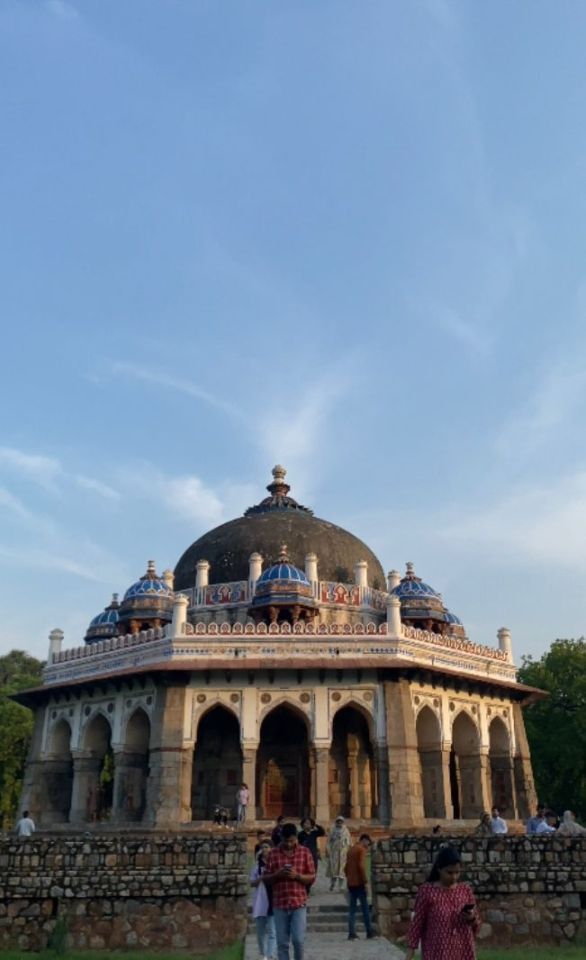
One of our recently started night walks is inside the complex of Humayun Tomb. The heritage walk takes the visitors and history enthusiasts inside the Humayun Tomb complex and then takes them around the neighborhood of Humayun Tomb as we explore lesser known gems such as Dum Dama Sahib, Sabz Burj, Nizamuddin Chillgah, and Patte Shah ka Dargah.
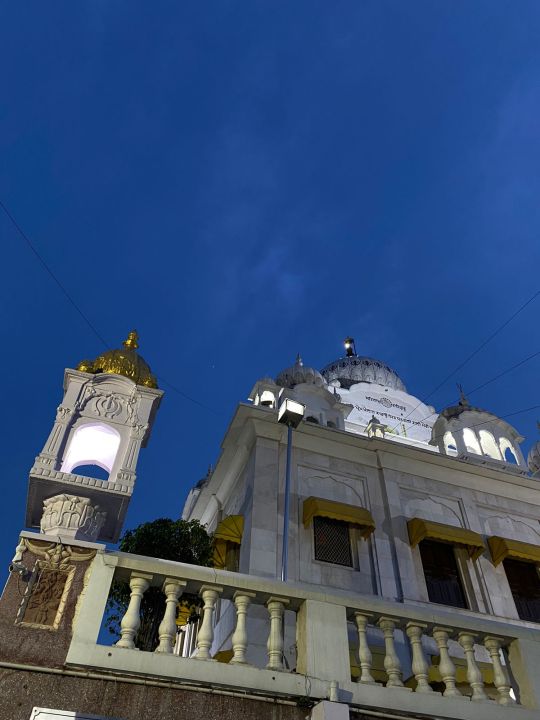
Humayun Tomb is a 90 acre heritage garden complex which was built by Hajji Begum the first wife of Emperor Humayun of the Mughal Dynasty. The entire area has several garden tomb complexes such as the Bu Halima, Isa Khan’s tomb, Afsarwala Tomb, Arab ki Serai. The history buffs are taken to various sites and are given detailed history of the heritage buildings,weaving together the narrative of Delhi.
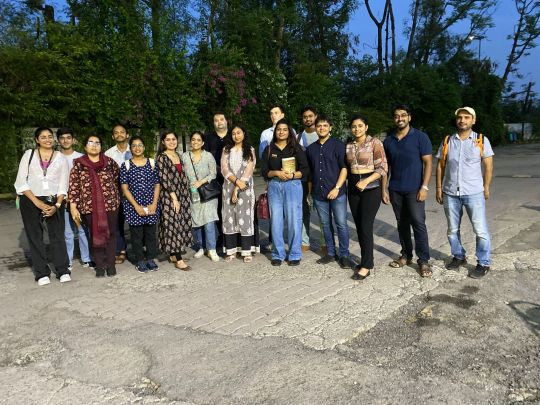
During the Raat Ke Afsane : Humayun Tomb monument walk, participants were thrilled to see the dome of the tomb lit up. The double dome is twice the height of the main building. The dormitory of Mughals as Humayun tomb is called has graves of Emperor Humayun, Hajji Begum, Hamida Banu Begum and around 60 more Mughal graves. It is believed that Dara Shukoh too is buried in the dormitory. However, his body remains unidentified.
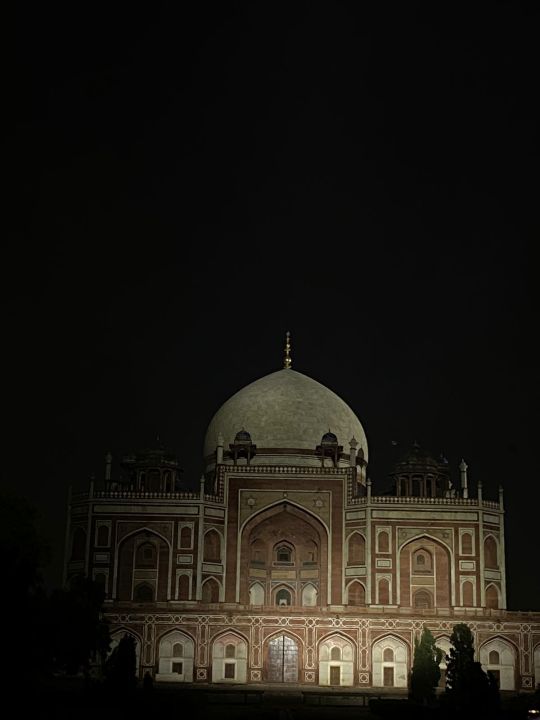
Many participants were in awe when they saw the monument lit up against the dark sky on a full moon night. The monument oddly looks like a 2-D cardboard at night and it seems unfathomable that the monument is indeed a real thing.
If you are someone who loves sightseeing in Delhi and exploring heritage but are hesitant to go alone these guided walks are an easy, affordable and a safe option which assist you on every step to enjoy these historical places in a large comfortable group of like minded people.
#Tours#Sight Seeing#Tour Services#Travel#Arts & Entertainment#Libraries & Museums#Tourist Destinations#People & Society#Jobs & Education#Specialty Travel#heritage tours#heritage walks#Delhi Heritage Walks#Guided walks in Delhi#History walks in Delhi#heritage walks in Delhi#custom heritage walks#Night Walks in Delhi#Morning Walks in Delhi#Delhi walking#Heritage trails in Delhi#Old Delhi Walks#Walking tours in Delhi#History of Delhi#Ladies Walk in Delhi#Historic trails in Delhi#history walks#Delhi city walks#Historic Delhi#the heritage walk
1 note
·
View note
Video
youtube
National Crafts Museum New Delhi राष्ट्रीय शिल्प संग्रहालय National Hand...
#youtube#Museum#Crafts Museum#Handicrafts#Fine Arts#National Museum Of#National Crafts Museum#National Crafts Museum In New Delhi#Paintings#Sculptures#Murals
0 notes
Text
In the bustling heart of Delhi, where history and modernity dance hand in hand, stands the Kiran Nadar Museum of Art (KNMA) — a beacon of cultural brilliance and a contender for the title of the best museum in Delhi.
0 notes
Text
Museums in Delhi
Kiran Nadar Museum of Art is a shining gem among museums in Delhi, offering a unique blend of artistic excellence, cultural celebration, and community engagement. Whether you're an art aficionado or a curious explorer, KNMA invites you to embark on a journey into creativity and discover the magic of Indian art. Visit KNMA and let your imagination soar in this extraordinary art museum in Delhi.
0 notes
Text
Inside the DAG x Jamini Roy house
For years now, DAG (previously Delhi Art Gallery) has been greater than a gallery. Almost three a long time previous, with the largest assortment of pre-modern and trendy Indian artwork, it has had uncommon collaborations — with the Archaeological Survey of India and the National Gallery of Modern Art at Dhrishyakala (Red Fort, Delhi) and with Ghare Baire (Old Currency Building, Kolkata), as an…
View On WordPress
#Artist Jamini Roy#Ballygunge Place#CEO Ashish Anand#DAG#Delhi Art Gallery#Iconic Masterpieces of Indian Modern Art#India Habitat Centre#Jamini Roy house#Jamini Roy House Artist Museum#Jamini Roy museum#Kolkata#National Museum#The National Gallery of Modern Art
0 notes
Text

there is enough places to visit and touring which of them you select for spending quality and fun time with your friends loved ones or family. Everything About Delhi is amazing and cool.
#adventure#delhi#fun#place#visit#culture#traditonal illustration#art#museum#island#kids#family#freinds#history
0 notes
Text
Origins of the Pibo: Let’s take a trip along the Silk Road.
1. Introduction to the garment:
Pibo 披帛 refers to a very thin and long shawl worn by women in ancient East Asia approximately between the 5th to 13th centuries CE. Pibo is a modern name and its historical counterpart was pei 帔. But I’ll use pibo as to not confuse it with Ming dynasty’s xiapei 霞帔 and a much shorter shawl worn in ancient times also called pei.
Below is a ceramic representation of the popular pibo.
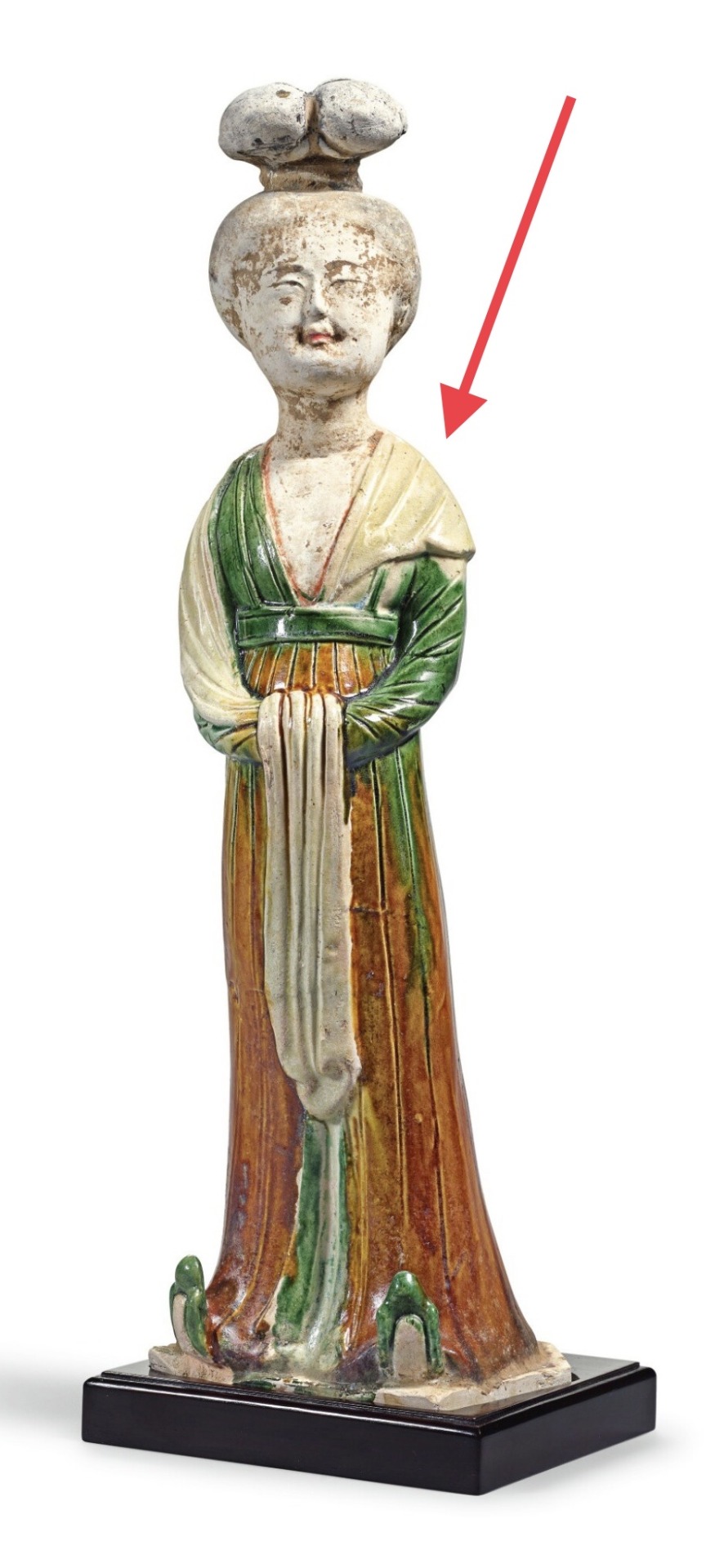
A sancai-glazed figure of a court lady, Tang Dynasty (618–690, 705–907 CE) from the Sze Yuan Tang Collection. Artist unknown. Sotheby’s [image source].
Although some internet sources claim that pibo in China can be traced as far back as the Qin (221-206 BCE) or Han (202 BCE–9 CE; 25–220 CE) dynasties, we don’t start seeing it be depicted as we know it today until the Northern and Southern dynasties period (420-589 CE). This has led to scholars placing pibo’s introduction to East Asia until after Buddhism was introduced in China. Despite the earliest art representations of the long scarf-like shawl coming from the Northern and Southern Dynasties period, the pibo reached its popularity apex in the Tang Dynasty (618–690 CE: 705–907 CE).
Academic consensus: Introduction via the Silk Road.
The definitive academic consensus is that pibo evolved from the dajin 搭巾 (a long and thin scarf) worn by Buddhist icons introduced to China via the Silk Road from West Asia.
披帛是通过丝绸之路传入中国的西亚文化, 与中国服饰发展的内因相结合而流行开来的一种"时世妆" 的形式. 沿丝绸之路所发现的披帛, 反映了丝绸贸易的活跃.
[Trans] Pibo (a long piece of cloth covering the back of the shoulders) was a popular female fashion period accessory introduced to China by West Asian cultures by way of the Silk Road and the development of Chinese costumes. The brocade scarves found along the Silk Road reflect the prosperity of the silk trade that flourished in China's past (Lu & Xu, 2015).
I want to add to the above theory my own speculation that, what the Chinese considered to be dajin, was most likely an ancient Indian garment called uttariya उत्तरीय.
2. Personal conjecture: Uttariya as a tentative origin to pibo.
In India, since Vedic times (1500-500 BCE), we see mentions in records describing women and men wearing a thin scarf-like garment called “uttariya”. It is a precursor of the now famous sari. Although the most famous depiction of uttariya is when it is wrapped around the left arm in a loop, we do have other representations where it is draped over the shoulders and cubital area (reverse of the elbow).
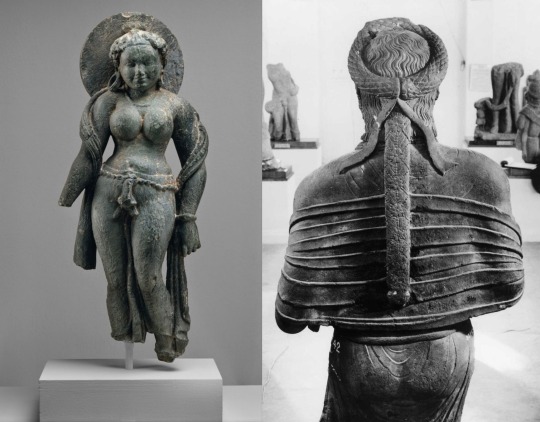
Left: Hindu sculpture “Mother Goddess (Matrika)”, mid 6th century CE, gray schist. Artist unknown. Looted from Rajasthan (Tanesara), India. Photo credit to Metropolitan Museum of Art, New York, United States [image source].
Right: Rear view of female statue possibly representing Kambojika, the Chief Queen of Mahakshatrapa Rajula, ca. 1st century CE. Artist unknown. Found in the Saptarishi Mound, Mathura, India. Government Museum, Mathura [image source].
Buddhism takes many elements from Hindu mythology, including apsaras अप्सरा (water nymphs) and gandharvas गन्धर्व (celestial musicians). The former was translated as feitian 飞天 in China. Hindu deities were depicted wearing clothes similar to what Indian people wore, among which we find uttariya, often portrayed in carvings and sculptures of flying and dancing apsaras or gods to show dynamic movement. Nevertheless, uttariya long predated Buddhism and Hinduism.
Below are carved representation of Indian apsaras and gandharvas. Notice how the uttariya are used.

Upper left: Carved relief of flying celestials (Apsara and Gandharva) in the Chalukyan style, 7th century CE, Chalukyan Dynasty (543-753 CE). Artist Unknown. Aihole, Karnataka, India. National Museum, New Delhi, India [image source]. The Chalukyan art style was very influential in early Chinese Buddhist art.
Upper right: Carved relief of flying celestials (gandharvas) from the 10th to the 12th centuries CE. Artist unknown. Karnataka, India. National Museum, New Delhi, India [image source].
Bottom: A Viyadhara (wisdom-holder; demi-god) couple, ca. 525 CE. Artist unknown. Photo taken by Nomu420 on May 10, 2014. Sondani, Mandsaur, India [image source].
Below are some of the earliest representations of flying apsaras found in the Mogao Caves, Gansu Province, China. An important pilgrimage site along the Silk Road where East and West met.
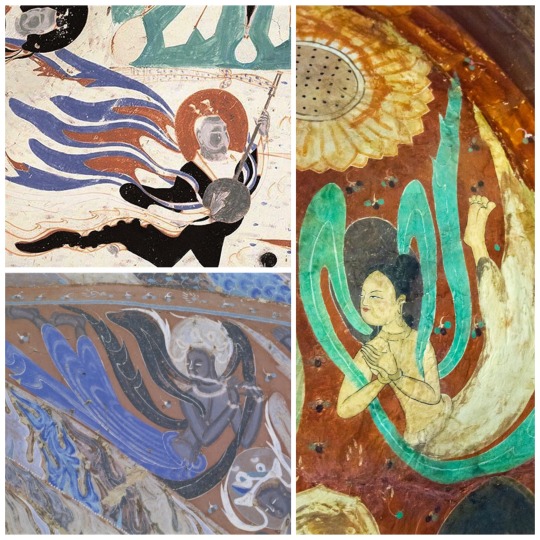
Left to right: Cave No. 461, detail of mural in the roof of the cave depicting either a flying apsara or a celestial musician. Western Wei dynasty (535–556 CE). Artist unknown. Mogao Grottoes, Dunhuang, China [image source].
Cave 285 flying apsara (feitian) in one of the Mogao Caves. Western Wei Dynasty (535–556 CE), Artist unknown. Photo taken by Keren Su for Getty Images. Mogao Grottoes, Dunhuang, China [image source].
Cave 249. Mural painting of feitian playing a flute, Western Wei Dynasty (535-556 CE). Image courtesy by Wang Kefen from The Complete Collection of Dunhuang Grottoes, Vol. 17, Paintings of Dance, The Commercial Press, Hong Kong, 2001, p. 15. Mogao Grottoes, Dunhuang, China [image source].
I theorize that it is likely that the pibo was introduced to China via Buddhism and Buddhist iconography that depicted apsaras (feitian) and other deites wearing uttariya and translated it to dajin.
3. Trickle down fashion: Buddhism’s journey to the East.
However, since Buddhism and its Indian-based fashion spread to West Asia first, to Sassanian Persians and Sogdians, it is likely that, by the time it reached the Han Chinese in the first century CE, it came with Persian and Sogdian influence. Persians’ fashion during the Sassanian Empire (224–651 CE) was influenced by Greeks (hellenization) who also had a a thin long scarf-like garment called an epliblema ἐπίβλημα, often depicted in amphora (vases) of Greek theater scenes and sculptures of deities.

Left to right: Dame Baillehache from Attica, Greece. 3rd century BCE, Hellenistic period (323-30 BCE), terracotta statuette. Photo taken by Hervé Lewandowski. Louvre Museum, Paris, France [image source].
Deatail view of amphora depicting the goddess Artemis by Athenian vase painter, Andokides, ca. 525 BCE, terracotta. Found in Vulci, Italy. Altes Museum, Berlin, Germany [image source].
Statue of a Kore (young girl), ca. 570 BCE, Archaic Period (700-480 BCE), marble. Artist unknown. Uncovered from Attica, Greece. Acropolis Museum, Athens, Greece [image source].
Detail view of Panathenaic (Olympic Games) prize amphora with lid, 363–362 BCE, Attributed to the Painter of the Wedding Procession and signed by Nikodemos, terracotta. Uncovered from Athens, Greece. J. Paul Getty Museum, Los Angeles, California, United States [image source].
Roman statue depicting Euterpe, muse of lyric poetry and music, ca. 2nd century CE, marble, Artist unknown. From the Villa of G. Cassius Longinus near Tivoli, Italy. Photo taken by Egisto Sani on March 12, 2012, Vatican Museums, Rome, Italy [image source].
Greek (or Italic) tomb mural painting from the Tomb of the Diver, ca. 470 BCE, fresco. Artist unknown. Photo taken by Floriano Rescigno. Necropolis of Paestum, Italy [image source].
Below are Iranian and Iraqi period representations of this long thin scarf.

Left to right: Closeup of ewer likely depicting a female dancer from the Sasanian Period (224–651 CE) in ancient Persia , Iran, 6th-7th century CE, silver and gilt. Artist unknown. Mary Harrsch. July 10, 2015. Arthur M. Sackler Gallery of Asian Art, Smithsonian, Washington D.C [image source].
Ewer with nude dancer probably representing a maenad, companion of Dionysus from the Sasanian Period (224–651 CE) in ancient Persia, Iran, 6th-7th century CE, silver and gilt. Artist unknown. Mary Harrsch. July 16, 2015. Arthur M. Sackler Gallery of Asian Art, Smithsonian, Washington D.C [image source].
Painting reconstructing the image of unveiled female dancers depicted in a fresco, Early Abbasid period (750-1258 CE), about 836-839 CE from Jawsaq al-Khaqani, Samarra, Iraq. Museum of Turkish and Islamic Art, Istanbul [image source].
The earliest depictions of Buddha in China, were very similar to West Asian depictions. Ever wonder why Buddha wears a long draped robe similar to a Greek himation (Romans called it toga)?
Take a look below at how much the Greeks influenced the Kushans in their art and fashion. The top left image is one of the earliest depictions of Buddha in China. Note the similarities between it and the Gandhara Buddha on the right.
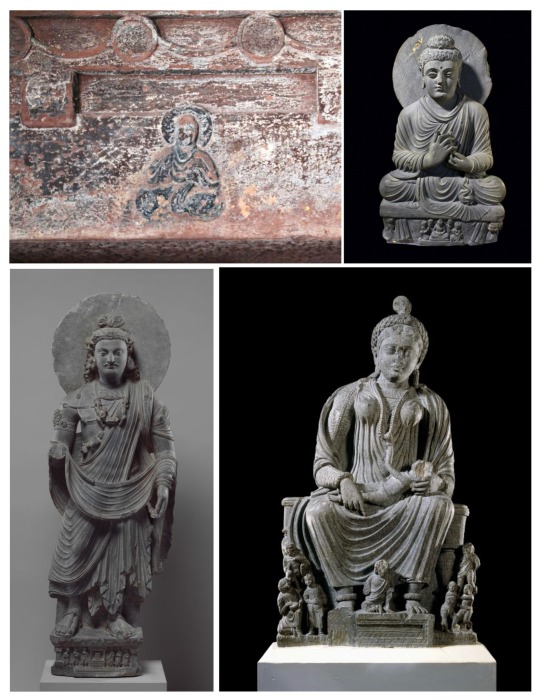
Left: Seated Buddha, Mahao Cliff Tomb, Sichuan Province, Eastern Han Dynasty, late 2nd century C.E. (photo: Gary Todd, CC0).
Right: Seated Buddha from Gandhara, Pakistan c. 2nd–3rd century C.E., Gandhara, schist (© Trustees of the British Museum)
Standing Bodhisattva Maitreya (Buddha of the Future), ca. 3rd century, gray schist. From Gandhara, Pakistan. Image credit to The Metropolitan Museum of Art, New York City, United States [image source].
Statue of seated goddess Hariti with children, ca. 2nd to 3rd centuries CE, schist. Artist unknown. From Gandhara, Pakistan. The British Museum, London, England [image source].
Before Buddhism spread outside of Northern India (birthplace), Indians never portrayed Buddha in human form.
Early Buddhist art is aniconic, meaning the Buddha is not represented in human form. Instead, Buddha is represented using symbols, such as the Bodhi tree (where he attained enlightenment), a wheel (symbolic of Dharma or the Wheel of Law), and a parasol (symbolic of the Buddha’s royal background), just to name a few. […] One of the earliest images [of Buddha in China] is a carving of a seated Buddha wearing a Gandharan-style robe discovered in a tomb dated to the late 2nd century C.E. (Eastern Han) in Sichuan province. Ancient Gandhara (located in present-day Afghanistan, Pakistan, and northwest India) was a major center for the production of Buddhist sculpture under Kushan patronage. The Kushans occupied portions of present-day Afghanistan, Pakistan, and North India from the 1st through the 3rd centuries and were the first to depict the Buddha in human form. Gandharan sculpture combined local Greco-Roman styles with Indian and steppe influences (Chaffin, 2022).
In the Mogao Caves, which contain some of the earliest Buddhist mural paintings in China, we see how initial Chinese Buddhist art depicted Indian fashion as opposed to the later hanfu-inspired garments.

Left to right: Cave 285, detail of wall painting, Western Wei dynasty (535–556 CE). Mogao Grottoes, Dunhuang, China. Courtesy the Dunhuang Academy [image source]. Note the clothes the man is wearing. It looks very similar to a lungi (a long men’s skirt).
Photo of Indian man sitting next to closed store wearing shirt, scarf, lungi and slippers. Paul Prescott. February 20, 2015. Varanasi, India [image source].
Cave 285, mural depiction of worshipping bodhisattvas, 6th century CE, Wei Dynasty (535-556 A.D.), Unknown artist. Mogao Grottoes, Dunhuang, China. Notice the half bow on his hips. That is a common style of tying patka (also known as pataka; cloth sashes) that we see throughout Indian history. Many of early Chinese Buddhist paintings feature it, including the ones at Mogao Caves.
Indian relief of Ashoka wearing dhoti and patka, ca. 1st century BC, Unknown artist. From the Amaravathi village, Guntur district, Andhra Pradesh, India. Currently at the Guimet Museum, Paris [image source].
Cave 263. Mural showing underlying painting, Northern Wei Dynasty (386–535 CE). Artist Unknown. Picture taken November 29, 2011, Mogao Grottoes, Dunhuang, China [image source]. Note the pants that look to be dhoti.
Comparison photo of modern dhoti advertisement from Etsy [image source].
Spread of Buddhism to East Asia.

Map depicting the spread of Buddhism from Northern India to the rest of Asia. Gunawan Kartapranata. January 31, 2014 [image source]. Note how Mahayana Buddhism arrived to China after passing through Kushan, Bactrean, and nomadic steppe lands, absorbing elements of each culture along the way.
Wealthy Buddhist female patrons emulated the fantasy fashion worn by apsaras, specifically, the uttariya/dajin and adopted it as an everyday component of their fashion.

Cave 285. feitian mural painting on the west wall, Western Wei Dynasty (535–556 CE). Artist unknown. Mogao Grottoes, Dunhuang, China [image source].
Cave 285. Detail view of offering bodhisattvas (bodhisattvas making offers to Buddha) next to the phoenix chariot on the Western wall of the cave. Western Wei Dynasty (535–556 CE). Artist unknown. Mogao Grottoes, Dunhuang, China [image source].
Cave 61 Khotanese (from the kingdom of Khotan 于阗 [56–1006 CE]) donor ladies, ca. 10th century CE, Five Dynasties period (907 to 979 CE). Artist unknown. Picture scanned from Zhang Weiwen’s Les oeuvres remarquables de l'art de Dunhuang, 2007, p. 128. Uploaded to Wikimedia Commons on October 11, 2012 by Ismoon. Mogao Grottoes, Dunhuang, China [image source].
Detail view of Ladies Adorning Their Hair with Flowers 簪花仕女图, late 8th to early 9th century CE, handscroll, ink and color on silk, Zhou Fang 周昉 (730-800 AD). Liaoning Provincial Museum, Shenyang, China [image source].
Therefore, the theory I propose of how the pibo entered East Asia is:
India —> Greek influenced West Asia (Sassanian Persians, Sogdians, Kushans, etc…) —> Han China —> Rest of East Asia (Three Kingdoms Korea, Asuka Japan, etc…)
Thus, the most likely theory, in my person opinion, is Buddhist iconography depicting uttariya encountered Greek-influenced West Asian Persian, Sogdian, and Kushan shawls, which combined arrived to China but wouldn’t become commonplace there until the explosion in popularity of Buddhism from the periods of Northern and Southern Dynasties to Song.
References:
盧秀文; 徐會貞. 《披帛與絲路文化交流》 [The brocade scarf and the cultural exchanges along the Silk Road]. 敦煌研究 (中國: 敦煌研究編輯部). 2015-06: 22 – 29. ISSN 1000-4106.
#hanfu#chinese culture#chinese history#buddhism#persian#sogdian#kushan#gandhara#indian fashion#uttariya#pibo#history#asian culture#asian art#asian history#asian fashion#east asia#south asia#india#pakistan#iraq#afghanistan#sassanian#silk road#fashion history#tang dynasty#eastern han dynasty#cultural exchange#greek fashion#mogao caves
296 notes
·
View notes